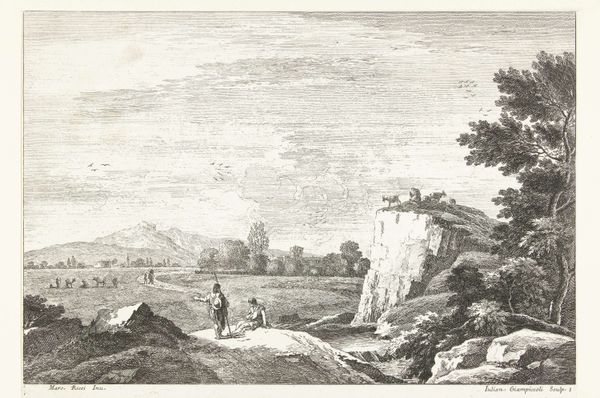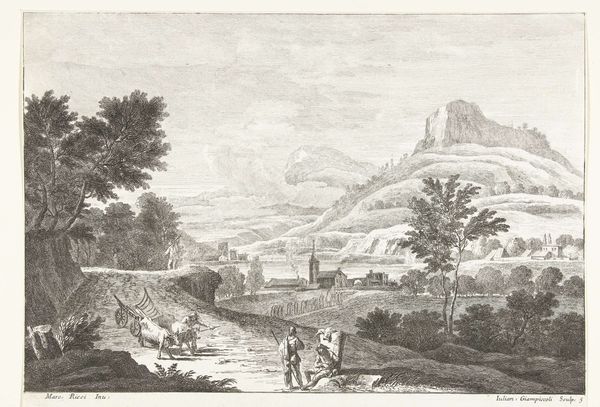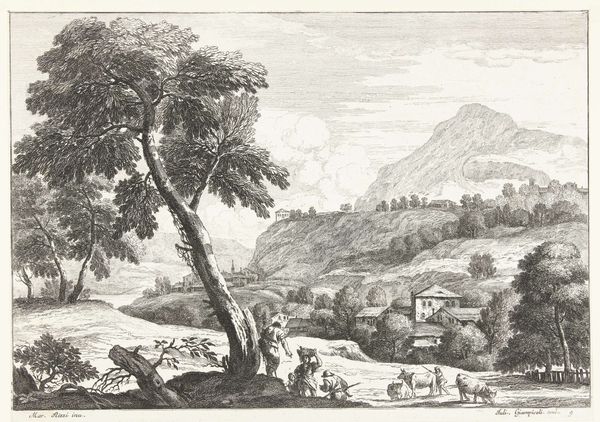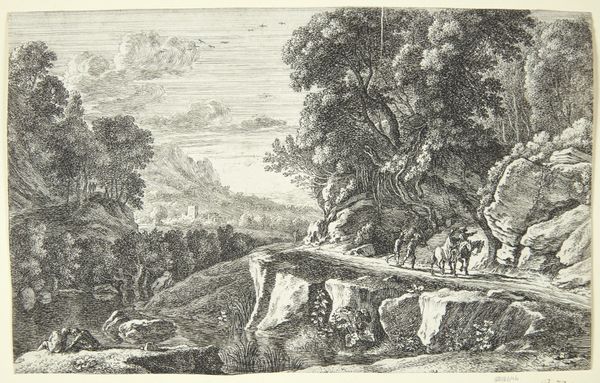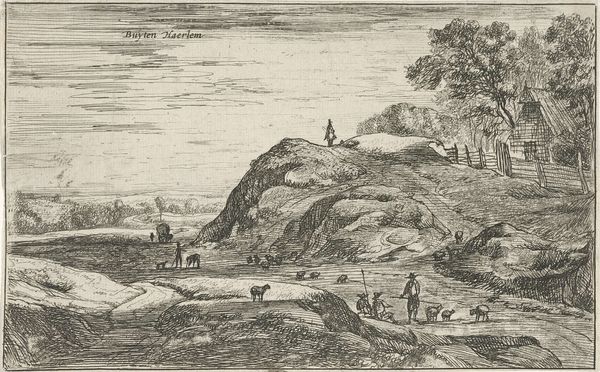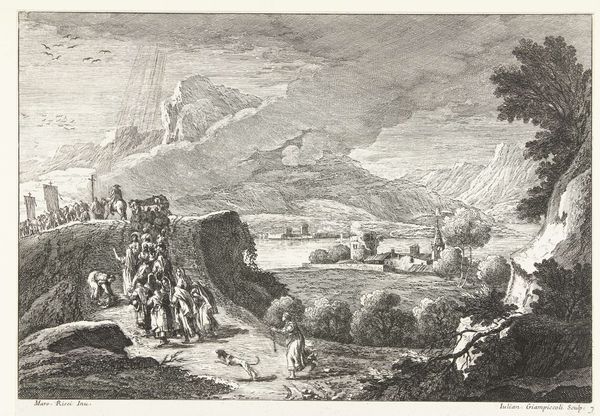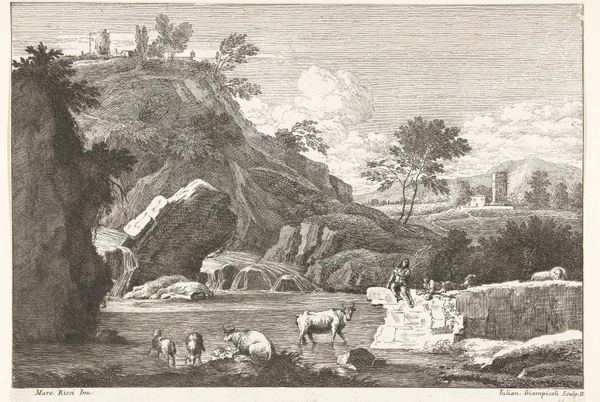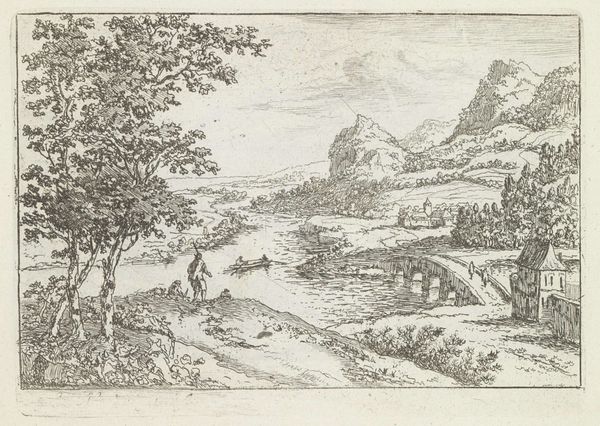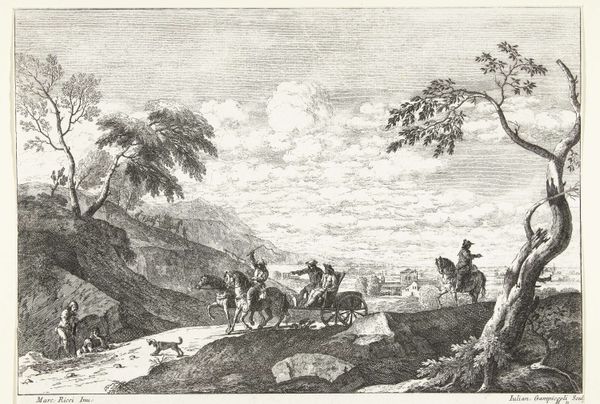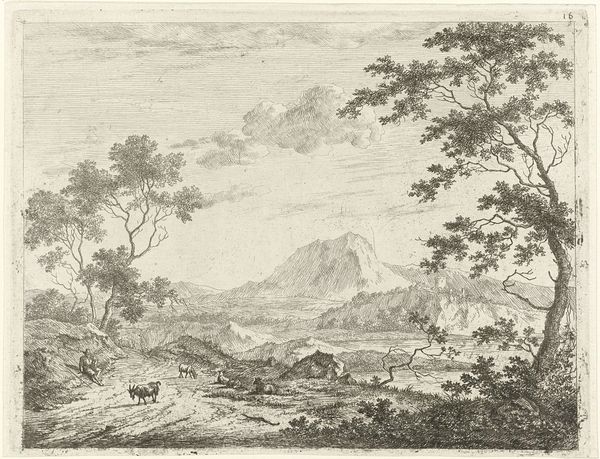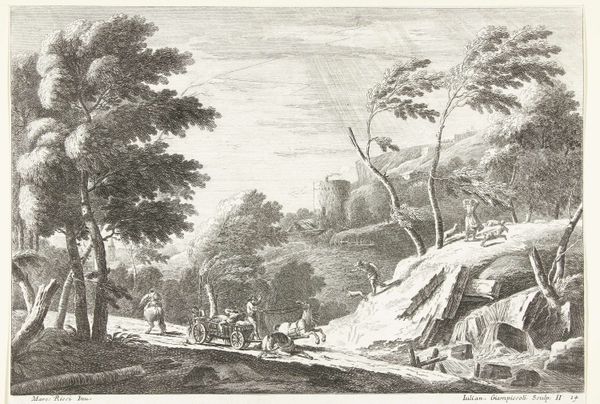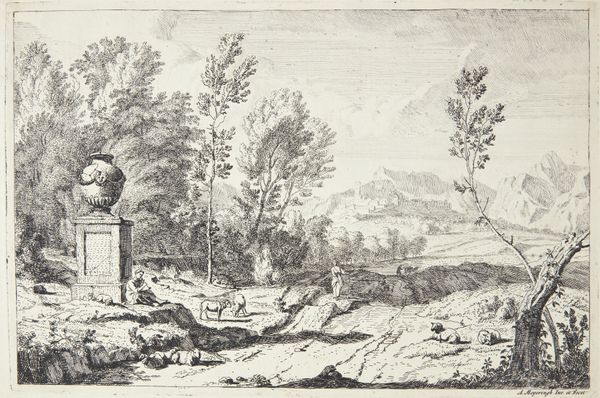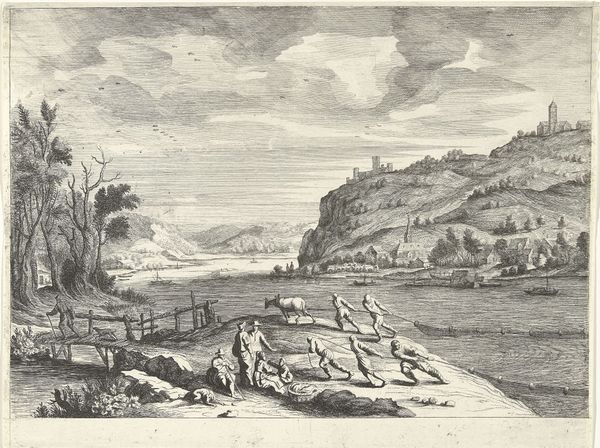
engraving
#
baroque
#
landscape
#
river
#
line
#
engraving
Dimensions: height 251 mm, width 352 mm
Copyright: Rijks Museum: Open Domain
Editor: So, this is Giuliano Giampiccoli’s "River Landscape with House Against Rock," created around 1739 or 1740. It's an engraving currently held at the Rijksmuseum. I'm really struck by how the artist balances the detailed foreground with the vast, almost empty sky. What do you make of this piece? Curator: It's fascinating to consider Giampiccoli's work in the context of 18th-century printmaking and the Grand Tour. Prints like this served as souvenirs, spreading idealized visions of the Italian landscape. Notice the figures. They’re pastoral, seemingly untouched by urban life. How do you think this imagery resonated with its intended audience? Editor: I guess it was meant to show a simpler, maybe more "authentic" way of life, far from the industrializing cities back home? The viewers probably found comfort in that idea. But also, were the actual people portrayed fairly in art, I wonder? Curator: Precisely. These idealized landscapes, while beautiful, often obscured the social realities of the time. Consider how the portrayal of labor, particularly in rural settings, often glossed over hardship and inequality. Do you see how the romanticized view almost sanitizes actual events that were happening at the time? Editor: That's a good point! I hadn't considered the kind of sanitized narrative this engraving might be selling. It's a pretty image, but it’s clearly presenting a very specific point of view, isn’t it? Curator: Exactly. Examining art through a historical lens allows us to unpack these layers of meaning and understand the complex interplay between art, society, and power. Hopefully you realize now there is more to the engraving than the picturesque view. Editor: Definitely, I see that now. It’s more than just a pretty scene. I'll be paying attention to context much more moving forward.
Comments
No comments
Be the first to comment and join the conversation on the ultimate creative platform.
